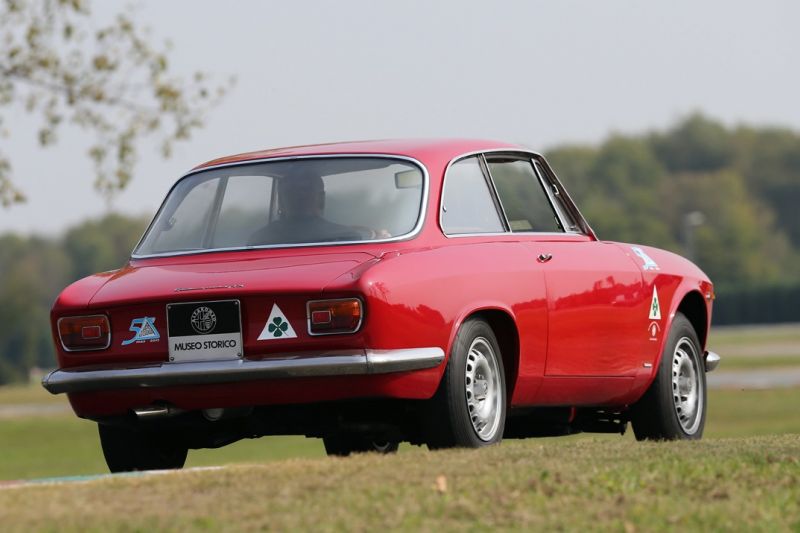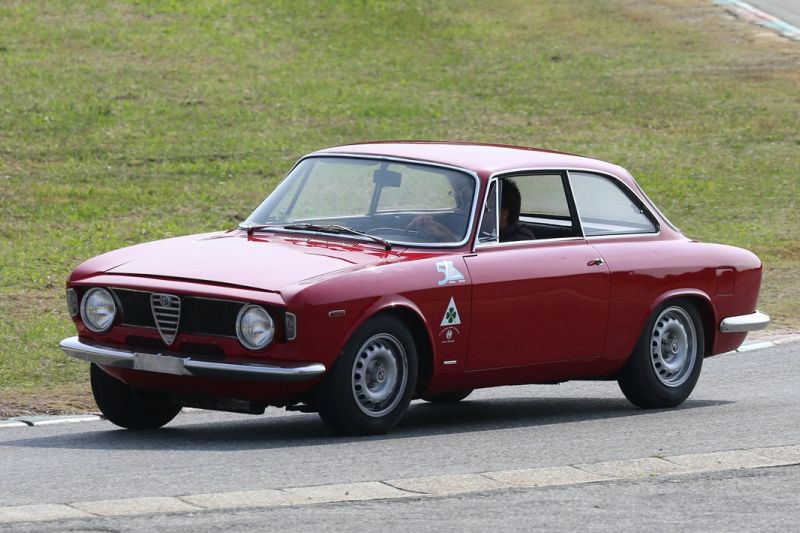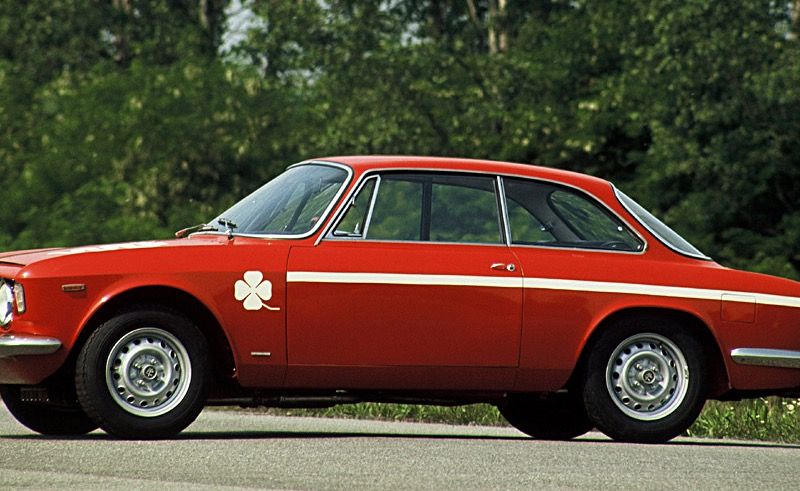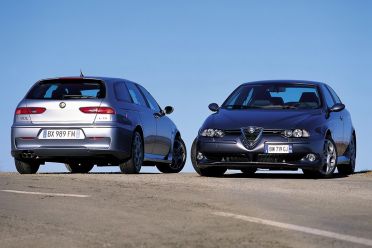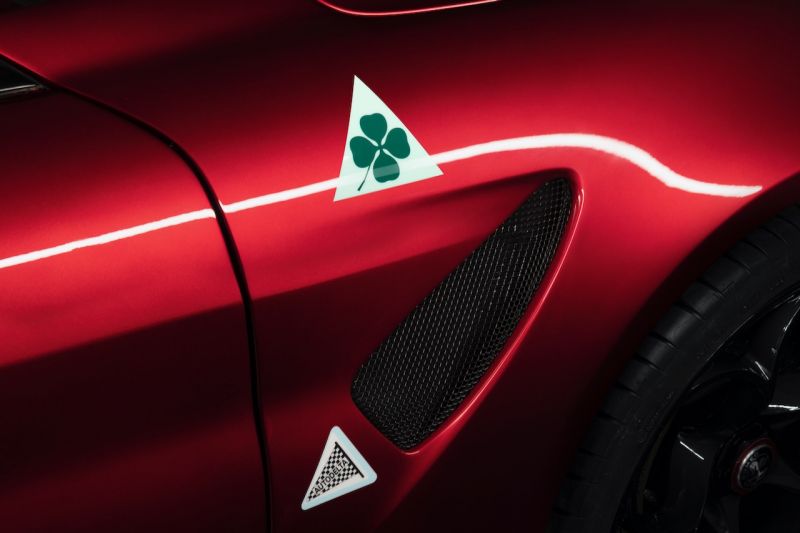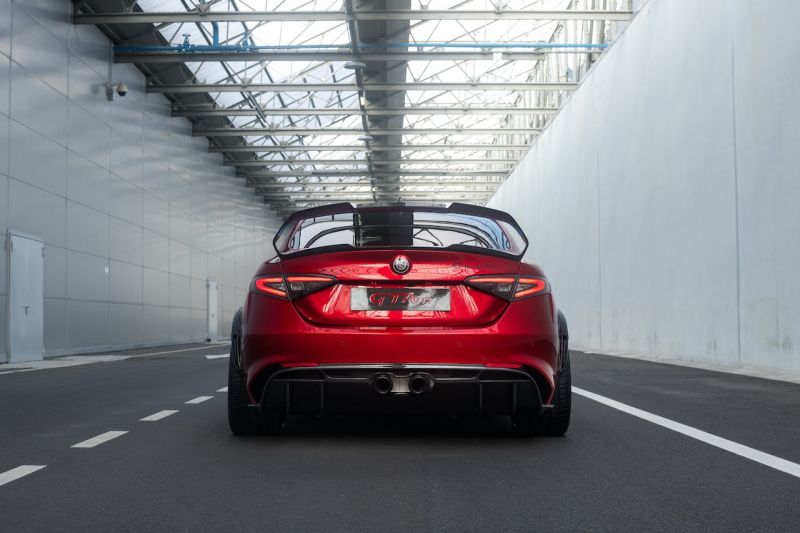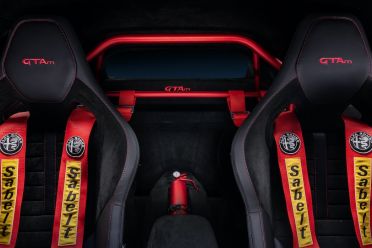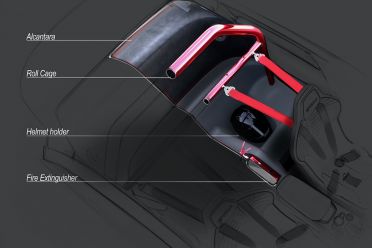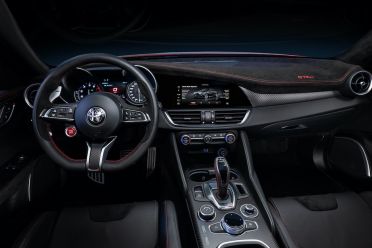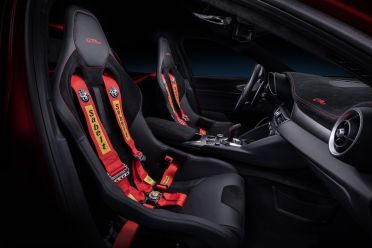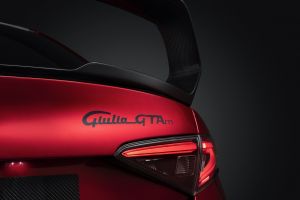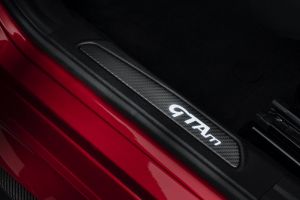Did we really need the Alfa Romeo Giulia GTA or GTAm? I’m very excited to get behind the wheel, but the Giulia Quadrifoglio never really needed more power.
The QV features a twin-turbo 2.9-litre V6 packing a beefy 375kW of power and 600Nm of tyre-shredding torque, so it isn’t exactly lacking in the grunt department.
When I drove the Giulia Quadrifoglio at the Fiat Chrysler test circuit in Balocco, Italy as part of its launch program in 2016, the performance was nothing short of breathtaking.
My initial impressions were echoed by everyone else at the event. Whenever another journalist came back into the makeshift pits they were either speechless – and usually wearing a huge grin of approval.
Here was a proper Alfa Romeo with the goods to play in the big league, against the mighty German onslaught of performance sedans that could hack it on the track and on the daily grind.
Performance remains epic, especially from a sub-3.0 litre displacement V6. Alfa Romeo quotes 3.9 seconds for the 100km/h sprint, while top speed is 307km/h.
The QV also lapped the Nürburgring Nordschleife circuit in 7 minutes 39 seconds, a sedan record at the time.
To properly understand the significance of the GTA and GTAm badges, you need to rewind to 1965, when Bertone designed the original Giulia GTA. The A, by the way, is short for Alleggrita – Italian for lightened.
The original GTA was built by Autodelta SpA, the motorsport arm of Alfa Romeo, on a shortened Giulia platform.
These were special builds, and they were only loosely based on the road-going car. Aluminium body panels were used instead of steel, and even the inner steel panels were fabricated using thinner-gauge metal that was bonded and pop-riveted together for greater strength and less weight
The wheels were lightweight magnesium alloy, while other weight-saving solutions included plastic side windows, unique door handles, simplified window mechanisms, lightweight interior trim, and an aluminium rear upper control arm.
Collectively these measures helped lower the Giulia’s weight from 950kg to 820kg. Who wouldn’t want to drive an Alfa Romeo that’s lighter than a Toyota Aygo.
Power came from a 1.6-litre twin-cam inline four-cylinder engine with specialised components such as a twin-plug system with a Marelli distributor from the Ferrari Dino, twin-barrel 45mm Weber carburettors instead of the standard 40s, and a magnesium camshaft cover, sump, bell-housing, and timing belt cover.
The gear ratios were also closer together than the standard car, and the gears were carefully machined for lightness and quicker shifting. In road-going Stradale guise the GTA made 85kW and 142Nm but in race form the same engine developed up to 130kW.
Only 500 GTAs were made, making them as rare as hen’s teeth these days.
Rarer still was the GTA 1300 Junior built from 1968-75. The 1300 was based on the 1600, but had a smaller displacement and shorter stroke. Just 450 were built.
In max-power GTAm form – that’s ‘m’ for maggiorata, or increased – Alfa Romeo upped the power with a 2.0-litre engine derived from the 1750 GTV. It was built between 1969 and 1971, and featured a mechanical fuel injection system to bump power as high as 180kW.
Build numbers are difficult to verify because the GTAm wasn’t individually numbered like the GTA, but records suggest only 40 examples rolled from the factory.
The GTA and GTAm went on to collect a total of 12 touring championships between 1966 and 1971, some of which were against significantly more powerful cars such as the BMW 3.0 CSL.
It’s no coincidence 2020 marks 110 years of Alfa Romeo’s existence, and some 55 years since the last authentic GTA models arrived on the scene.
Alfa Romeo has dusted off the GTA moniker for a couple of models in recent years, including the 147 and 156 GTA. Both featured the same 3.2-litre Busso V6 engine, but little else in the way of performance enhancing measures.
The new interpretation of the GTA and even more extreme GTAm is different.
On paper, Alfa looks to be applying the same concept and technical principles were used to develop the original GTA – albeit adapted to meet the design constraints around safety and emissions these days.
All the right signs are there. The new Giulia GTA is lighter, gets more power, and adds advanced aerodynamics for a more holistic approach to performance.
There’s no confusing the top-spec GTAm with its standard GTA stablemate. The tell-tale sign is the big rear wing, fashioned from carbon-fibre by Sauber Engineering of Formula 1 fame.
The regular version gets a rear spoiler only slightly larger than the QV.
In fact most of the external carbon-fibre bits are part of the new Sauber kit, specifically designed for the GTA.
Key to the extra downforce is the newly-designed active front splitter, complete with carbon-fibre winglets that wrap around the air dam at the sides. The package also includes side skirts that kick up heavily at the leading edge of the rear wheel arches.
There are new 20-inch centre-lock wheels – a first for a sedan, according to Alfa Romeo. High-speed handling has been enhanced thanks to a 50mm wider track, new springs, and fresh shocks and bushings for the suspension.
Stopping power should be epic thanks to carbon-ceramic discs with gold-painted Brembo calipers as part of the GTA’s standard equipment package.
Of particular note are the two graphic logos that adorn the front three-quarter guards: The four-leaf clover (Quadrifoglio), and the Autodelta triangle beneath it.
There’s a power boost, but it isn’t as significant as you might have expected of a GTA – especially given tuners in the UK can bump power to 450kW with a Stage 1 software upgrade.
Alfa Romeo’s engineers have applied a far more modest 22kW increase to the Quadrifoglio’s 2.9-litre twin-turbo, engine lifting power to just over 400kW, while torque remains the same.
Much of that increase will be down to the GTA’s new titanium exhaust system by Akrapovic. The central exhaust tips are integrated into the all-new carbon fibre rear diffuser for what is a stunning rear view, and you can bet the exhaust note will be angry enough to match.
Far more significant, though, is a weight loss program that has seen the GTAm shed 100kg compared with the standard QV.
It ditches the rear bench in favour of an Alcantara-wrapped storage tub with moulds for a pair of open-faced helmets and a fire extinguisher. There are no rear door panels, and the front grab handles have been replaced by fabric door pulls in a nod to the Alfa’s motorsport heritage.
Oh, and there’s a roll-cage in the rear of the GTAm with mounting points for Sabelt six-point harnesses.
The centrepiece is the Alcantara and leather racing seats with exquisite carbon-fibre shells by Sabelt. There are at least four spots in the cabin where you’ll find the GTAm logo tastefully embroidered in red, too.
More weight shedding can be found in the lightweight polycarbonate resin side and rear windows, as well as the host of carbon bits throughout the GTAm.
On the technology front, though, the GTA and GTAm interiors will be familiar to anyone who’s driven a regular Giulia.
Although there’s no definitive weight published by Alfa for the regular GTA at this stage, it’s bound to come in beneath a stock QV given the extensive weight-shedding program applies to both variants.
It all comes together to provide a class-leading power-to-weight ratio of 261.1kW/tonne. Performance is scintillating, with the GTAm able to jet from 0-100km/h in 3.6 seconds – three-tenths better than the standard Quadrifoglio.
Again, there’s no performance data for the normal GTA, but we believe it won’t be far off its lighter sibling thanks to a new launch control system, a first for the Giulia.
With a build run of just 500 GTA and GTAm units in total it’s likely to become a collectable.
Alfa Romeo says the GTA buying experience will be a one-to-one experience, using a product specialist to guide the buyer through the process from order to delivery.
GTA buyers will also receive specialised racing gear, including a Bell helmet in GTA livery, a full racing kit from Alpine Stars, consisting of race suit, and a personalised car cover.
Additionally, there’s a customised driving course run by the Alfa Romeo Driving Academy.
Fiat Chrysler Australia says it wants the GTA and GTAm, and confirmed it’s working on getting right-hand drive supply to our market.
Prices have been released in Italy, as well as special liveries designed by the Centro Stile Alfa Romeo. Colours appear to be limited those of the Italian flag at this stage.
Prices have also been revealed, starting from €143,000 and €147,000 ($242,600 and $249,415) before tax through Europe, and from €175,000 and €180,000 for Italy.
It’s supercar money for sure, but the GTAm is likely to become a genuine collectable in my view. By the way, I’ll take the red with stripes.


